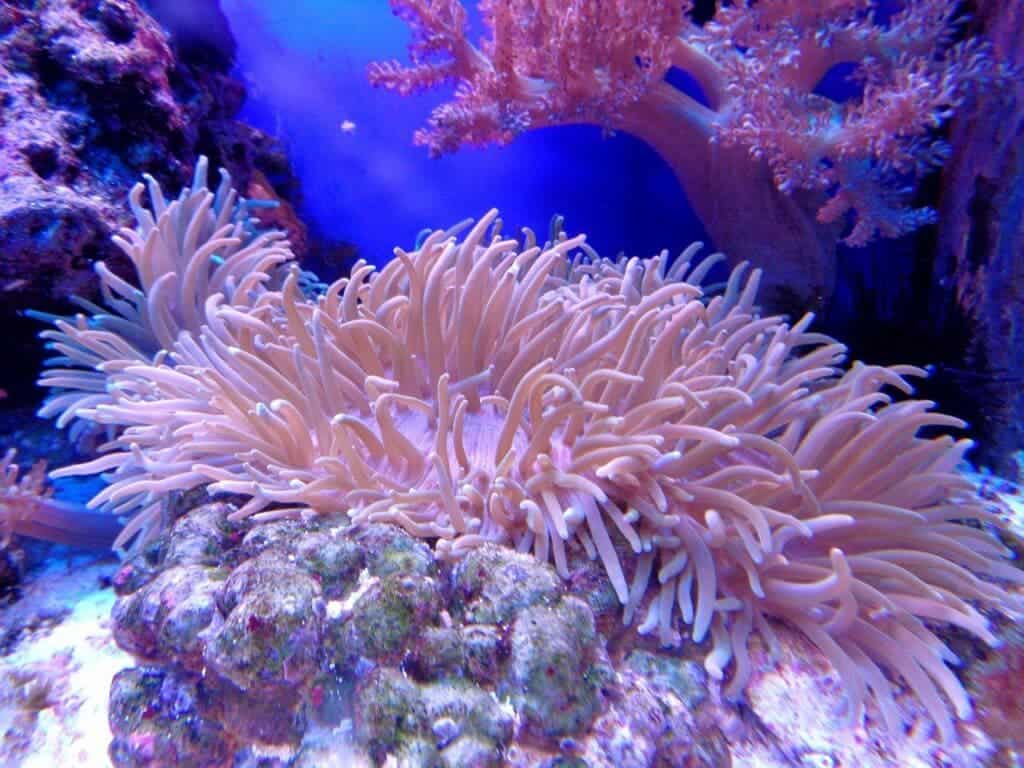Scientists breed mutant algae to save world’s corals from bleaching.
Researchers at the University of California, Riverside are exploring options to save corals from climate change by reversing the damage caused by bleaching events.

Marine life relies heavily on corals and the reef they form for food and shelter. Climate change, however, is throwing a wrench in the workings of corals. Elevated, sustained mean water temperatures can cause widespread death throughout reefs.
Corals, sea anemones, and jellyfish belong to a group of animals called cnidarians. Many form symbiotic relationships with photosynthesizing algae which live inside their tissues and provide them with carbon and sugars in return for certain nutrients. Some species are fully dependent on the products of their symbiotic algae to survive. When temperatures get too high for too long, cnidarians evict these symbiotes in an act of stress known as ‘bleaching‘. If the relationship is not restarted within a few weeks from a bleaching event, the cnidarian will die.
Researchers are now investigating the details of this relationship in an effort to safeguard the world’s remaining corals from climate change.
Best friends forever
One of the biggest unknowns in this symbiotic relationship was whether it could form without photosynthesis taking place. For the study, the team led by Robert Jinkerson, an assistant professor of chemical and environmental engineering at UCR, and Tingting Xiang, an assistant professor of biological sciences at the University of North Carolina at Charlotte created non-photosynthesizing mutants of Symbiodiniaceae algae and tested whether they can form symbiotic relationships with cnidarians.
These mutants were placed into seawater tanks containing sea anemones (Exaiptasia pallida) that had not yet established their own symbiotic algae communities. The team reports that within a day of exposure, the anemone’s tentacles were hosting symbiotic algae, despite their inability to photosynthesize.
“We were very excited to be able to generate six photosynthetic mutants and then use those mutants to start to probe the symbiosis between these algae and their hosts,” Jinkerson said.
Next, the researchers tested whether these algal communities would survive in their host’s tissues for longer periods of time. So they seeded sea anemones with both mutant and non-mutant strains of the algae and kept them in complete darkness for six months. They were still present in their hosts’ tissues after this time, although they did not reproduce or increase in number meaningfully. Four other algal species known to form symbiotic relationships with the anemones were also used in this experiment, and they too could initiate symbiosis in the dark.
When the experiment was performed again using juvenile polyps of stony coral Acropora tenuis, the algae successfully colonized the corals but, this time, were able to proliferate in their tissues even without photosynthesis.
For jellyfish, the results were less stellar. The algae did colonize the polyps of upside-down jellyfish (Cassiopea xamachana) in a darkened tank, but to a lesser degree than in corals or sea anemone.
“Our study highlights the power of forward genetic approaches to probe cnidarian Symbiodiniaceae symbiosis and provides a promising platform to answer key questions in symbiosis and ultimately develop strategies to save corals,” said Xiang.
Although the findings might not seem very important on the face of them, they do help further our understanding of the relationship between these two tightly-linked groups of organisms. For starters, they showcase that symbiotic algae-cnidarian systems can form even in the absence of photosynthesis, which offers a new path forward for the study of their interactions. It also upends a large part of our theories regarding how and why these relationships form, and what keeps them going.
Furthermore, the results show that the behavior of symbiotic algae is highly dependent on the specific cnidarian species they are interacting with — as evidenced by the different evolutions of the modified algae with different cnidarian species in the darkened tanks.
The team hopes that their work will help further our efforts of helping cnidarians survive climate change in the wild, a goal for which time is running short, they explain.
The paper “Cnidarian-Symbiodiniaceae symbiosis establishment is independent of photosynthesis” has been published in the journal Current Biology.


